Aligning Prayer Manifestations with Natural Cycles
Have you ever felt a deep sense of peace while standing beneath a vast, starlit sky or sitting quietly by a flowing river? There’s something undeniable about how nature speaks to our soul. It reminds us of something greater, something beyond our daily lives. This connection to the natural world often aligns with our faith—whatever that faith may look like for you.
Nature holds wisdom. It reflects cycles of growth, change, and renewal—just as you do in your own life. In many spiritual traditions, the natural world is seen not just as a backdrop but as an active participant in the sacred. Moments in nature may remind you that you’re part of something bigger, a vast, interconnected system where everything has meaning.
Do you ever wonder why spiritual practices often incorporate elements of nature? From water used in rituals to fire symbolizing transformation, these elements aren’t just symbols. They are tools to help you reconnect with life’s rhythms and your own inner truth.
Your spirituality and nature aren’t separate—they’re intertwined. Whether it’s through meditating outdoors, observing changing seasons, or simply noticing a bird in flight, nature can deepen your sense of connection to the divine.

Finding Sacredness in Everyday Life Through Nature
When you think of your faith or belief system, do you see it as something reserved for special occasions or specific practices? Sometimes, it’s hard to feel that connection in everyday life. Yet, nature gives you an opportunity to make the sacred a part of your daily experience.
Look at a tree, for example. Its roots run deep while its branches stretch high. Isn’t that a beautiful metaphor for staying grounded while reaching for your highest potential? The more you observe the world around you, the more you’ll notice divine messages in the smallest details.
Even things as simple as a sunrise or the sound of rain can carry spiritual meaning. You don’t need to complicate it. Just being present with these moments can help you feel grounded, connected, and at peace. It’s about cultivating an awareness—a habit of noticing the divine in what’s around you.
Why Align Manifestations with Natural Cycles?
Tapping Into the Wisdom of Cycles
Have you ever felt like you were pushing against the flow, trying to force something to happen before it felt ready? If so, you’re not alone. Many of us feel like we have to work harder, faster, or longer to bring our dreams to life. But nature offers a different lesson.
Think about the seasons. Spring doesn’t rush to arrive, and autumn doesn’t cling when it’s time for winter. These cycles remind us that everything unfolds when it’s meant to. What if you gave yourself permission to align with that natural rhythm instead of fighting against it?
Manifestation—whether it’s a prayer, a goal, or a heartfelt wish—is most powerful when it aligns with the cycles of nature. For example, the new moon often symbolizes beginnings, making it an ideal time to plant seeds of intention. The full moon, on the other hand, is a time for fullness, release, or gratitude.
By syncing your efforts with these cycles, you’re not just working harder—you’re working smarter. You’re partnering with forces beyond yourself.
Allowing Time for Growth and Rest
Just as the earth needs periods of dormancy to bloom again, so do your dreams. Manifestations don’t happen overnight. And sometimes, the waiting can feel hard or even discouraging. But think of a garden: seeds need time to take root before they sprout. It’s not a dead-end; it’s part of the process.
Have patience with yourself. This doesn’t mean you sit back and do nothing. It means you act with intention, trusting there’s a time for action and a time for rest. Are you giving yourself the same grace you’d give to someone you love?
By aligning your efforts with natural cycles, you acknowledge that you’re part of that cycle, too. This way, you honor the process rather than rushing toward an outcome.
Read: When Your Prayers Go Unanswered…
The Holistic Approach to Prayer and Intention
Moving Beyond Words
When you think of prayer or intention, it’s easy to picture it as something spoken—a wish, a plea, or words of gratitude. But prayer is so much more than words. Have you ever considered that how you live can also be a form of prayer?
Every choice you make, every action you take, can reflect your intentions. Cooking a meal with care, helping a friend in need, or simply taking a quiet moment to breathe—all of these are ways to make your intentions real and grounded.
This holistic approach integrates your mind, body, and spirit. It’s not about perfection but about presence. How can your daily actions reflect what’s most important to you?
Balancing Action and Surrender
There’s a delicate balance between putting effort into your intentions and trusting the outcome to unfold as it’s meant to. Sometimes the hardest part is surrendering control. But surrender doesn’t mean giving up. It’s about letting go of the need to force things and starting to trust the process instead.
Think of prayer or setting an intention as planting a seed. You water it by taking action—whether that’s working toward a goal, meditating, or speaking affirmations. But you can’t pull on that seed to make it grow faster. At some point, you have to let go and trust that it’s enough.
Does surrender scare you? That’s okay. It’s hard to let go of the outcome when you care so deeply. But consider this: even when you feel like nothing is happening, it doesn’t mean the universe or your higher power isn’t working on your behalf.

Inviting Mindfulness into Your Practices
A holistic approach also means being mindful. Are you rushing through your prayers or intentions? Do you give yourself time to feel what you’re asking for? It’s okay if you’ve been distracted—we all get caught up in life’s busyness.
But mindfulness invites you to slow down and truly connect with what you’re doing. Light a candle, step outside, or simply breathe deeply before you begin. These small acts of presence can transform a routine practice into something deeply meaningful.
When you bring your whole self to your intentions—body, mind, and soul—you might find they take on even greater significance. Can you feel the difference when you’re fully present versus just going through the motions? Quiet moments like these can hold incredible power.
The Rhythm of the Earth and the Human Spirit
How Earth’s Rhythms Mirror Your Own
Have you ever noticed how the earth seems to move in harmony—day turning into night, the seasons cycling seamlessly, the ocean tides ebbing and flowing? This rhythm isn’t random. It’s a steady, grounding force that touches every living thing, including you.
Think about how your own life mirrors these patterns. You have times of energy and expansion, just like the vibrant surge of spring. You also go through moments of stillness or retreat, much like winter’s quiet pause. Isn’t it comforting to know you’re not alone? The earth itself offers reassurance that these moments of change and contrast are natural and necessary.
What happens when you tune in to this rhythm? You may find that it helps you feel more balanced. Instead of feeling like life is moving too fast—or too slow—you connect with something larger. You begin to trust that there is a perfect time for everything, even when it doesn’t feel that way in the moment.
Feeling Grounded in Earth’s Steady Pulse
Have you ever felt unsteady, as if your mind or spirit was scattered? That’s when connecting to the earth’s rhythms can be grounding. Try something simple, like walking barefoot on the grass or sitting quietly outdoors. Notice how life continues to flow, even when you feel stuck.
The earth invites you to come back to yourself, to pause and anchor your energy. Imagine a tree. It sways in the wind, yet its roots remain firm. The same can be true for you. By paying attention to the earth’s steady pulse, you create space to feel safe and centered during life’s uncertainties.
What Can Nature Teach You About Letting Go?
The earth also shows you what it means to release. Consider the leaves falling in autumn—there’s no resistance, no holding on to what’s no longer needed. Can you let yourself release in the same way? Are there patterns, fears, or even expectations that no longer serve you?
When you align yourself with these natural lessons, you may find it easier to embrace change. Trust that shedding old layers doesn’t mean losing who you are. It’s simply a way of making room for what’s next.
How Natural Cycles Impact Our Energetic State
Recognizing Your Seasons
Just like the earth has seasons, so do you. There are seasons of growth, where everything feels alive and possible. But there are also seasons of rest, where you pull back to recharge. Neither is right or wrong—they both have a purpose.
Have you ever felt like you had to constantly be productive, even when your body or spirit was craving rest? It’s a feeling so many of us know. But nature shows you another way. Winter doesn’t apologize for its stillness. Spring doesn’t hesitate to bloom. Each phase unfolds exactly as it should, bringing energy or quiet depending on what’s needed.
Tuning into your own cycles can bring clarity. If you’re in a phase that feels slower or heavier, could it just be your time to rest? If you’re feeling energized and motivated, is it your personal spring arriving? Recognizing these internal “seasons” can encourage you to embrace where you are instead of forcing yourself into a rhythm that doesn’t feel right.
The Power of Rest and Renewal
Does the word “rest” feel unfamiliar or even uncomfortable to you? Many of us struggle with allowing ourselves the time to rest. But have you noticed how, after a period of stillness, inspiration often flows more freely?
Think of a field lying fallow. The soil isn’t “doing nothing.” It’s restoring nutrients, getting ready for the next planting. The same is true for you. Rest is not a weakness—it’s a strength. It’s your way of preparing for the burst of energy that will come when the time is right.
What if you gave yourself permission to rest without guilt? Just as the earth thrives on cycles of renewal, so do you.
Aligning With Nature’s Energetic Flow
Nature operates on cycles of energy—rising, peaking, and retreating. Start to notice how these cycles affect you. Maybe the fresh energy of morning makes it easier to focus, or the calming rhythm of twilight helps you unwind. Even the moon’s phases may influence your energy, with the new moon encouraging introspection and the full moon creating intensity.
When you align with this flow instead of working against it, life begins to feel smoother. If you plan your goals or actions according to these cycles, you may feel more energized and supported in your efforts. Notice how your energy shifts with the seasons or even the time of day, and allow those shifts to guide you.

Recognizing Divine Patterns Within Nature
Seeing the Sacred in the Small Things
Do you ever look at the way a flower blooms or how the clouds move and feel a sense of awe? These moments may seem small, but they carry profound meaning. They remind you that the divine is woven into every corner of this world, even the ones that seem ordinary.
The intricate veins of a leaf or the perfect spiral of a seashell—these patterns aren’t random. They reflect a kind of sacred design, one that speaks to the presence of something greater. When you take the time to notice these details, you may begin to feel more connected to that divine presence. Have you seen these patterns in your own life? Moments where everything felt beautifully aligned, even for just a second?
Nature as a Reflection of Your Journey
The divine patterns in nature can be a mirror for your own life. Think about how rivers carve through rock—slowly, persistently, with patience. Doesn’t that remind you of your own persistence in tough times?
Or consider the cycles of the moon. Even when it’s a thin crescent, you know the full moon will return. It’s a reminder that just because something is hidden, it doesn’t mean it’s gone. Nature often reflects the hope we all need: the assurance that change, growth, and renewal are always on the horizon.
Slowing Down to Notice
It’s easy to go through your day without stopping to see these divine reminders. Life moves quickly, and sometimes the noise of it all drowns out the world’s quieter messages. But when you pause—when you let yourself truly see—nature becomes a teacher.
What divine patterns can you notice today? Maybe it’s the consistent rise of the sun, the way birds instinctively know to migrate, or even the balance of light and shadow throughout the day. These simple yet profound elements remind you that there is order and meaning, even when life feels chaotic.
Let nature guide you back to your own sense of peace and connection. Each time you notice and honor these patterns, you’re also honoring the divine energy within yourself. What sacred moments are waiting for you to uncover?
The Role of the Lunar Cycle in Manifestation
The New Moon: Planting Seeds of Intention
The new moon is all about beginnings. If you’ve been waiting for the perfect time to start something, this is it. The sky is dark, quiet, and full of potential—giving you a blank slate to work with. What dreams are resting quietly in your heart, waiting to be spoken into life?
During this phase, the energy is reflective and introspective. It’s an ideal time to set intentions, start fresh, and imagine new possibilities. Think of it as planting seeds in fertile soil. These seeds may be your goals, hopes, or even a new mindset you want to embrace. The work you do now is subtle but essential.
Take a moment to be clear about what you truly want. Journaling, meditating, or even speaking your intentions out loud can help solidify them. What matters most during the new moon is not how grand or detailed your plans are but your connection to them. Do they align with your deeper truth?
This phase asks you to trust in the unseen. There may not be immediate results—just like you wouldn’t expect a seed to sprout overnight. But beneath the surface of your life, changes are already beginning. The new moon invites you to have faith in the process and start with small, meaningful steps toward your dreams.
Read: Overcoming Prayer Manifestation Resistance
The Full Moon: Amplifying and Celebrating Manifestation
The full moon is the peak of the lunar cycle—bold, bright, and brimming with energy. Have you ever noticed how intense things can feel around this time? That’s because the full moon amplifies. It brings your emotions, actions, and efforts into full view, shedding light on both your progress and the obstacles in your way.
This is a time to celebrate. Even if your manifestations aren’t fully complete, there are always things to be grateful for. What wins, big or small, can you honor right now? By focusing on gratitude, you amplify the energy of abundance and success.
The full moon also provides clarity. If something isn’t working or no longer aligns with your intentions, this is the time to let it go. Release doesn’t have to be dramatic—sometimes, it’s as simple as acknowledging what isn’t serving you and choosing to move forward without it. Use this phase to free yourself from any patterns or beliefs that feel heavy or restrictive.
Full moons are also a great time for rituals that involve energy release or celebration. You might try cleansing your space, expressing thanks through a written list, or even just sitting beneath the moon’s light to soak in its vibrant energy. Let this phase remind you that your journey—no matter where you are on it—deserves to be honored.

The Waning Moon: Releasing and Renewing
After the powerful energy of the full moon, the waning moon brings with it a sense of exhale. It’s a quieter, softer time meant for reflection and release. What can you let go of to create space for what’s next?
As the moon’s light begins to diminish, so can the distractions, fears, or doubts that weigh you down. This phase invites you to declutter—not just physically but emotionally and energetically. Letting go might look like forgiving someone, releasing expectations, or simply resting when you need it.
This time isn’t about pushing forward. It’s about trusting the flow. Just like trees shed their leaves in autumn, releasing what’s unnecessary allows you to conserve your energy and prepare for the next cycle. Give yourself permission to slow down. Pause. Reflect.
Ask yourself: What am I ready to leave behind? By letting go, you’re not just losing something—you’re creating space for renewal, for something better to fill the gaps.
The waning moon reminds you that not every phase requires action. Sometimes, the most powerful thing you can do is rest, realign, and prepare for your next moment of growth. Trust that this stillness is just as important as the movement that will follow. The ebb makes way for the flow.
The Influence of Seasonal Changes on Prayer
Spring: Beginnings, Growth, and Renewal
Spring is filled with possibilities. The world wakes up after the stillness of winter, and with it comes a sense of newness. What is beginning to stir within you? Just like the seeds sprouting beneath the earth, your prayers during this season can focus on growth, hope, and fresh starts.
Spring invites you to plant your intentions. It’s a time to think about what you want to nurture in your life. Perhaps you’re starting a new chapter or dreaming of something you’ve long held in your heart. Use this time to take small, meaningful steps toward those dreams.
Have you noticed how vibrant everything becomes in spring? Flowers bloom, birds sing—it’s as though the earth itself is rejoicing. Could your prayers mirror this energy? Focus on gratitude for the opportunities and growth unfolding for you. Even if the process feels slow, trust that something beautiful is taking shape.
Spring is also about renewal. Just as the rain nourishes the earth, think about what nourishes your spirit. Does a walk outside, journaling, or quiet reflection help you reconnect with yourself? Use these practices to deepen your prayer life. Dream boldly, pray with intention, and trust that this is a season of beginnings.
Summer: Abundance, Passion, and Gratitude
Summer offers a season of light and warmth. Energies are high, and the world seems to overflow with life. Can you feel abundance all around you? Your prayers during this time can focus on celebrating what you’ve achieved and embracing passion in your heart.
This is a time to notice the fruit of your efforts. What has grown from the seeds you planted earlier? Often, in the hustle of life, we forget to pause and appreciate how far we’ve come. Summer encourages you to bask in the blessings around you. Let your prayers be filled with gratitude—gratitude for the big wins and the small joys alike.
Summer also ignites passion. Whether it’s creativity, relationships, or a goal that excites you, this is your season to lean into it. What lights you up? What makes your spirit feel alive? Let your prayers reflect this energy—celebratory, vibrant, and bold.
You might also notice that summer’s abundance brings clarity. Are there areas in your life where you’re overextended or focusing energy without fulfillment? Just as nature rests in the heat of midday, take time to balance your enthusiasm with moments of stillness. There’s power in both the high energy of action and the quiet satisfaction of simply being.
Allow summer to be a celebration of life’s richness. Let the sun’s warmth remind you of the light within you, and carry that energy into your prayers.
Read: Prayer Manifestation for Spiritual Awakening
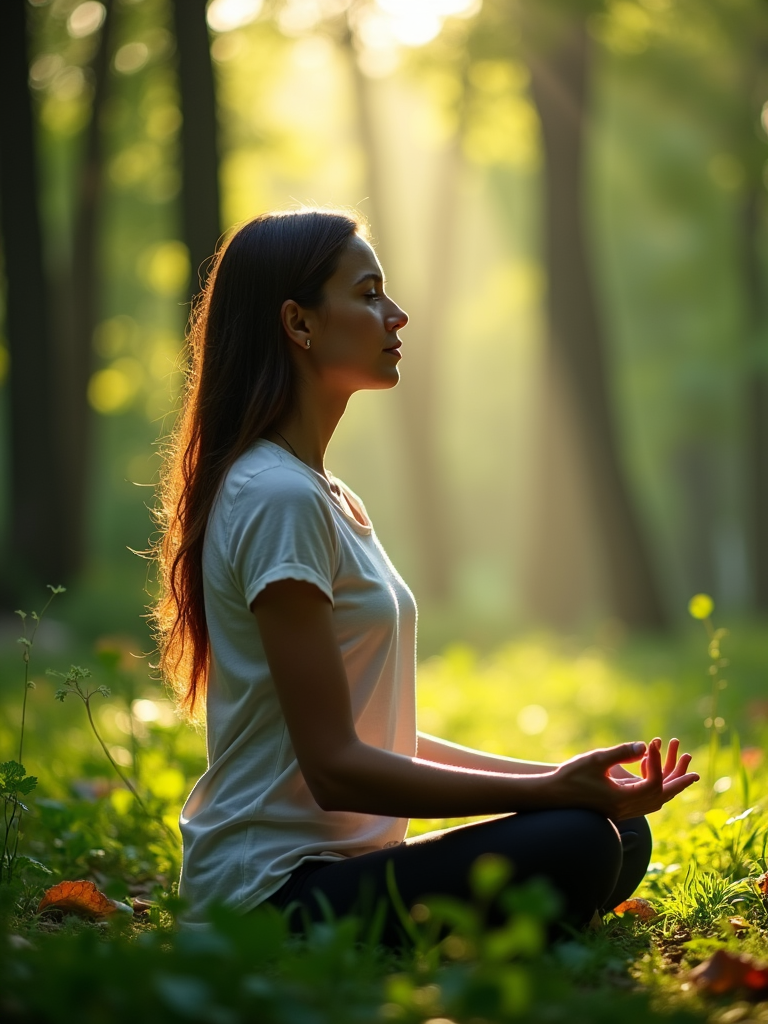
Autumn: Reflection, Harvest, and Letting Go
Autumn is a time of transformation. The leaves begin to change, the air grows crisp, and the world shifts into a season of harvest and reflection. How have your prayers and intentions from earlier seasons grown? What does your “harvest” look like?
This season asks you to recognize the fruits of your labor. Perhaps some intentions have blossomed into tangible blessings, while others may not have unfolded the way you expected. Both are worthy of reflection. What lessons can you gather from this season?
Autumn also invites you to release. Just as trees let go of their leaves, consider what no longer serves you. Is there a habit, mindset, or expectation you’ve been carrying that feels heavy now? Letting go doesn’t mean failure—it’s about creating space for new growth. Your prayers during this time can focus on surrendering with grace.
This is also a season of gratitude, much like summer, but with a quieter, more reflective tone. As you prepare for the stillness of winter, take time to acknowledge all the lessons and growth you’ve experienced—even the parts that felt challenging.
Autumn is a reminder of life’s cycles. Embrace this time to pray for clarity, to celebrate your harvest, and to gently release anything holding you back. Change is not the end; it’s part of your journey forward. What can you let go of now to invite something new later? Let that question guide your prayer.
Using Daily Rhythms in Prayer Practices
Morning: Setting Intentions for the Day
The morning holds a unique kind of energy—a sense of possibility that comes with a fresh start. Before the world’s noise rushes in, this is your chance to pause, breathe, and set the tone for the day ahead. Have you ever considered what kind of day you want to create for yourself?
Morning prayers or reflections can focus on intentions. What do you hope to embody as you move through your day? It could be patience, kindness, or simply the strength to face what’s in front of you. These moments are more than just words—they act as a compass, grounding you in what matters most.
Take a moment to visualize your ideal day. What does it feel like? What energy do you want to carry? Even a single word, like “peace” or “courage,” can guide you. By anchoring your morning in these reflections, you set a foundation not just for how you react to the day but how you actively shape it.
You don’t need anything elaborate to create a morning practice. A few deep breaths, a gentle affirmation, or a quiet moment of gratitude can go a long way. What can you give thanks for—right here, right now? How does that gratitude shift your focus?
Let your morning prayer or intention align with the rising sun—quiet, steady, and full of promise. No matter what the day brings, this grounding moment reminds you of your purpose and the strength within you to meet it.
Afternoon: Maintaining Alignment Through Challenges
By midday, life often feels busier, heavier, or even overwhelming. How do you stay connected to your intentions when distractions or challenges try to pull you off course? The afternoon is an invitation to pause and realign, even if just for a moment.
Sometimes a simple check-in can make all the difference. Ask yourself: How am I feeling in this moment? Am I moving in alignment with the intentions I set this morning, or have I drifted? Notice without judgment. You’re not meant to be perfect—just aware.
A mid-afternoon prayer can serve as a gentle reset. What do you need most right now? Perhaps it’s patience with a difficult situation, focus to finish a task, or strength to keep going. Speak that need aloud or hold it quietly in your heart. Trust that even this small act creates space for clarity and calm.
This part of the day may also bring challenges. Stress, unexpected problems, or moments of doubt can arise. But these are opportunities to return to yourself, to remember that you are not defined by the chaos around you. Think of alignment like tuning an instrument. Each time you pause, you bring yourself back into harmony.
Even a quick moment outdoors, a deep breath, or a silent affirmation can reconnect you with what truly matters. Try repeating a phrase like, “I am steady. I am capable.” Let your afternoon prayer or reflection remind you that you can meet the day’s challenges while staying rooted in your truth.
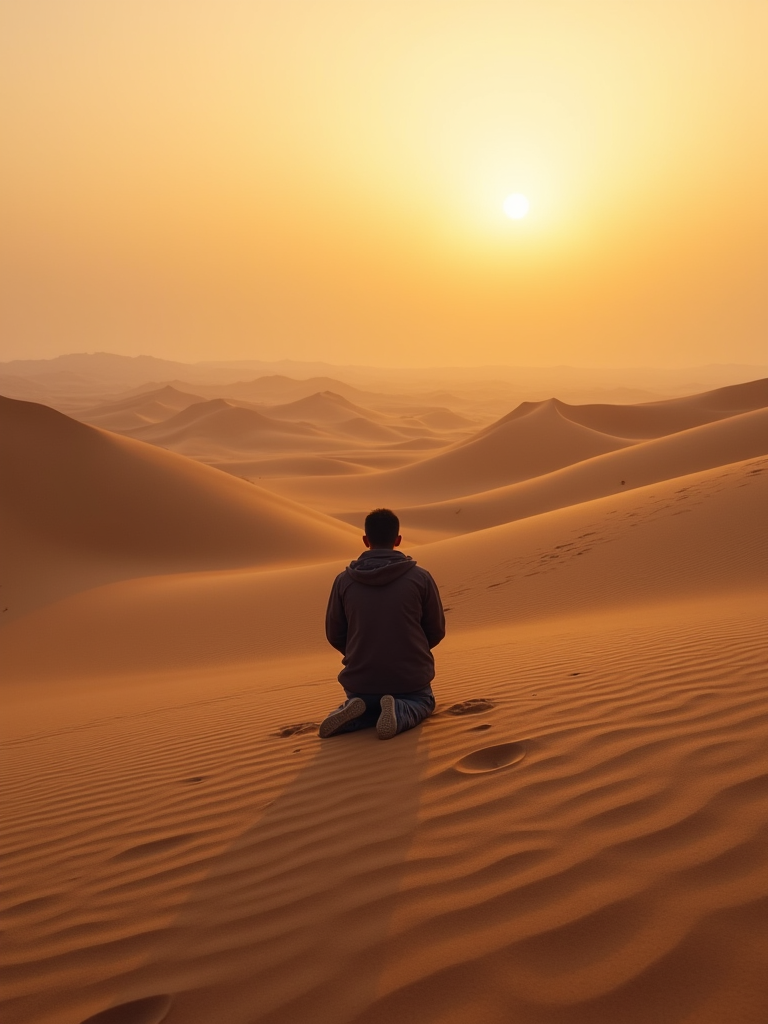
Evening: Reflection, Gratitude, and Rest
As the day draws to a close, the evening is your time for reflection—a time to look back with curiosity and care. What did today teach you? What moments, big or small, are worth celebrating?
Evening prayers can focus on gratitude. Think of one thing, even if it’s small, that brought you joy or comfort during the day. Maybe it was a kind word, a moment of quiet, or simply making it through. What can you give thanks for tonight? This act of acknowledgment shifts your focus from what went wrong to what went right, allowing you to end the day on a positive note.
This is also a time for release. Were there things today that felt heavy or unresolved? Evening prayers can help you let go. You might ask yourself, What am I willing to set down, knowing tomorrow is a new beginning? Surrender doesn’t mean ignoring challenges; it’s about trusting that some answers come with time, not force.
As you prepare for rest, think of your prayer as a bridge. It connects you to the peace you need to carry into sleep. You don’t have to ‘fix’ or solve everything before the day ends. Instead, trust that you’ve done what you could and that you’ll meet tomorrow with renewed energy.
Whether it’s through quiet reflection, journaling, or simply closing your eyes and breathing deeply, let your evening practice be one of kindness toward yourself. Rest isn’t just sleep—it’s a gift. Let your prayers guide you into that still, restorative space. What are you ready to lay down tonight? For all that the day has been, good or bad, know that you’ve made it through. You’ve done enough. You are enough.
Read: The Power of Collective Prayer in Global Manifestation
Harnessing Elemental Energy in Prayer
Earth: Grounding and Stability
Earth’s energy is steady, strong, and enduring. It offers a foundation for feeling rooted when life feels uncertain. When you connect to earth’s energy during prayer, you’re inviting a sense of stability into your heart and mind. Are there moments when you’ve felt like life was pulling you in all directions? Earth’s grounding presence can help you feel centered.
You can draw on this element when you need to slow down or regain your footing. Imagine the strength of a mountain or the stillness of an old tree. Their roots are deep, and no matter how fierce the winds, they remain unmoved. You can use this same energy in your life.
Try incorporating physical grounding into your prayers. Sit or stand barefoot on the earth, imagining roots growing from your feet into the soil. Breathe deeply and feel your connection to the ground beneath you. As you pray, invite stability into specific areas of your life. It could be clarity in decision-making, strength during change, or peace amid chaos.
What areas in your life feel unsteady right now? Use earth’s energy to affirm your resilience. Speak or think words like, “I am rooted. I am steady.” Visualize yourself as a tree, your roots extending into the earth for strength while remaining open to growth.
Earth energy also encourages patience. Think of the time it takes for seeds to grow into flourishing plants. When you pray with earth’s energy, you’re reminded to trust the process of growth—knowing that even unseen progress is still progress.
Water: Flow, Healing, and Emotional Release
Water is life. It flows, cleanses, adapts. When you lean into water’s energy during prayer, you tap into healing, emotional release, and the ability to adapt to change. What emotions are you holding onto right now? Water encourages you to let them flow.
Praying with water’s energy can feel deeply healing, especially during times of struggle or emotional overwhelm. Picture a river effortlessly carving its way, not resisting obstacles but flowing around them. This is the wisdom of water—it doesn’t fight change, it moves with it.
How can you let the energy of water guide your prayers? Consider reflecting near a natural body of water if you can, or simply incorporating water into your practice. Drink a glass of water with intention, visualizing it cleansing away emotional heaviness. Or, immerse your hands in water, imagining it carrying away your burdens.
Speak your emotions in prayer. Cry if you need to. Feel free to journal or simply sit in silence, letting your emotions rise and fall like the waves. When you allow your feelings to move freely, healing isn’t far behind. Remember, holding onto emotions can sometimes feel like a dam blocking a river. Releasing them doesn’t weaken you; it lightens your spirit.
Water also reminds you to flow with life. If you’re holding tightly to a specific outcome or resisting change, consider this: What would it feel like to let go? To adapt and flow rather than struggle against the current? Ask water’s energy for help in finding ease and clarity amid uncertainty.

Fire: Passion, Courage, and Transformation
Fire awakens your spirit. It stirs passion, fuels courage, and ignites transformation. Have you ever experienced a spark of inspiration or a moment of boldness out of nowhere? That’s fire energy. Through prayer, you can call on it to invite change, new beginnings, or deeper motivation into your life.
Fire is about action and boldness. If you’re feeling stuck or unsure, fire can help you find the courage to take the next step. Stand near a flame—whether it’s a candle, a bonfire, or even the warmth of the sun—and feel its energy rise within you. Let it remind you of your inner strength.
Not only does fire create, but it also clears. Think of how fire burns away what is no longer needed, making room for new growth. As you pray with fire energy, ask yourself: What do I need to release so I can move forward? Whether it’s fear, self-doubt, or something tangible holding you back, envision it being consumed by the flame, leaving you lighter and freer to walk your path.
The energy of fire also reminds you to fuel what matters most. What lights your soul on fire? Whether it’s a dream, a relationship, or a calling, let your prayers fan that flame. Speak life into your passions, ask for courage to follow through, and trust that transformation is already unfolding.
To work with fire energy in your prayer, you can light a candle and focus your gaze on its flame. Let it symbolize your intentions—bright, bold, and unwavering. You might say words of affirmation like, “I am strong. I am ready. I am transforming.”
Fire teaches you to trust the process of change. It’s not always easy, but it’s necessary. The sparks you nurture today can someday become the roaring fire of your dreams, lighting the way forward. Let fire remind you that courage isn’t the absence of fear—it’s taking action in its presence.
When you harness the energy of earth, water, and fire in your prayers, you’re inviting balance, healing, and transformation into your life. These elements aren’t just metaphors—they hold a guiding energy that can inspire and sustain you. Which of these energies speaks to you most right now? Listen closely, and let it support you on your journey.
The Importance of Solar Cycles
Understanding the Solstices in Spiritual Work
The solstices mark significant shifts in the solar cycle, offering powerful opportunities for spiritual alignment. The summer solstice, with its longest day and shortest night, is a celebration of light, abundance, and outward energy. It’s a time to acknowledge the ways you’ve manifested growth and embrace the fullness of life. What areas of your life feel most vibrant right now? How can you celebrate your own inner light?
During the winter solstice, the longest night of the year, you’re invited to turn inward. This is a sacred time for reflection, rest, and setting intentions as you prepare for renewal. It’s not just about the promise of longer days ahead but about honoring the stillness where transformation begins. Can you use this quiet space to reconnect with your inner truth?
Read: Understanding Signs and Synchronicities in Prayer Manifestation
Solstices remind you of the balance between expansion and rest, action and quiet, light and dark. They symbolize life’s continual cycles, teaching you that growth requires both effort and pause. How might you use these moments to reflect on your own cycles of energy and growth?
One way to honor the solstices is through ritual practices that reflect their energy. For the summer solstice, consider spending time outdoors, soaking in the sun, or creating a gratitude list. For the winter solstice, you might light candles, journal, or meditate in a dim, calming space. Let these practices ground you in the rhythm of the seasons while tuning you into your own spiritual flow.
Equinoxes: Balance and Harmonization
The equinoxes, when day and night are equal, offer a natural reminder of balance. They symbolize the harmony between opposites—light and dark, action and rest, giving and receiving—encouraging you to realign with your personal center. What does balance look like for you right now? Where might you need more equilibrium in your life?
The spring equinox signals a time of fresh starts and awakening. It’s about planting seeds—physically, emotionally, and spiritually. This could be a season for new projects, relationships, or intentions. Think about what you would like to call into your life. What are you ready to nurture?
The autumn equinox, on the other hand, invites reflection. It’s a time of harvest, of reaping what you’ve sown, and of letting go of what no longer serves you. Through this process of release, you create space for the next cycle. What lessons have you gathered during this season of your life?
To work with the equinoxes’ aligning energy, consider creating a ritual where you physically or metaphorically balance something—lighting two candles of equal size, writing a list of what you’re welcoming and what you’re releasing, or simply meditating on the feeling of balance. This sacred time is a chance to harmonize your inner and outer worlds.
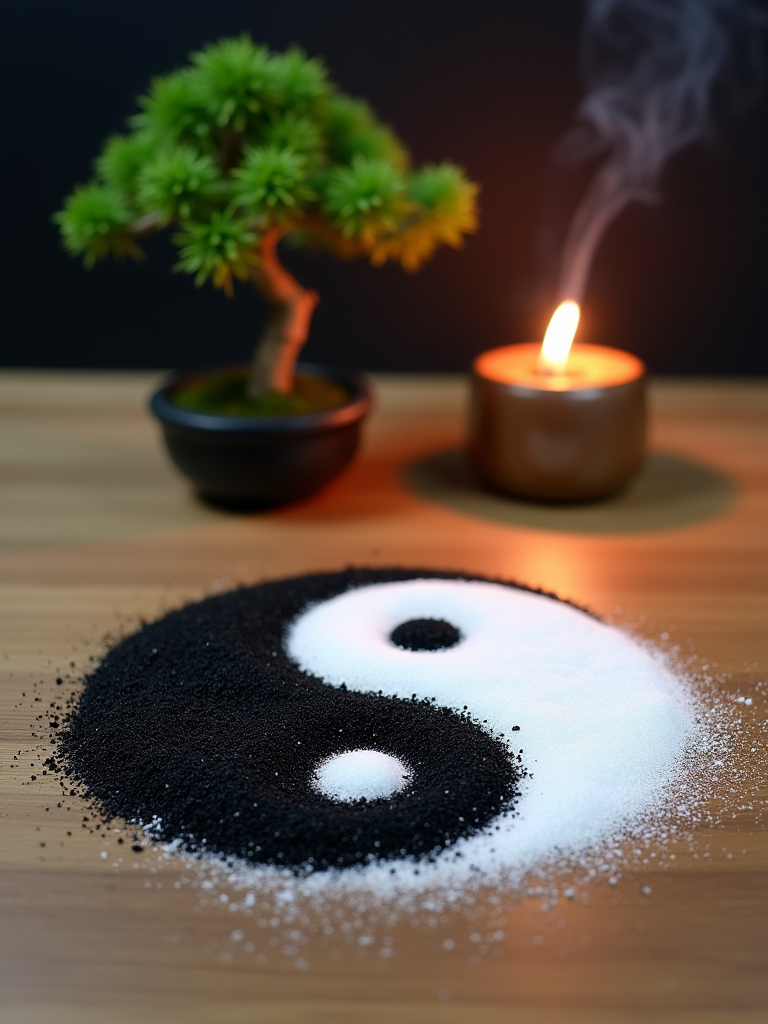
The Daily Path of the Sun and Energy Fluctuations
The sun’s daily journey—from the quiet promise of sunrise to the intensity of midday and the calm release of sunset—mirrors your own daily energy flow. Connecting with this rhythm can help you manage your energy and spiritual practices more mindfully.
At sunrise, the world awakens with a sense of hope and opportunity. This is the perfect time to set intentions or spend a few moments in gratitude. What do you wish to bring into your day? This early light carries fresh energy, reminding you of the infinite potential in each beginning.
Midday, when the sun stands at its highest, encourages action and focus. This is the time for productivity, for tackling tasks, and for embracing courageous, bold energy. Yet, it also demands mindfulness—ensuring your actions stay aligned with your intentions. Are you channeling your energy toward what truly matters?
As the sun begins to set, the energy softens, inviting reflection and release. This is your time to pause, to think about what went well, and to let go of anything that didn’t serve you. What can you leave behind as the day closes? By honoring the setting sun’s quieting energy, you give yourself permission to rest and reset for tomorrow.
Working with the daily solar cycle doesn’t have to be complicated. You might begin by stepping outside during these moments—watching the sun rise, feeling its peak warmth, or observing its gentle glow as it sets. Let the sun’s rhythm teach you to honor your own energy cycles, and trust that each day carries its own unique opportunities for growth and peace.
Indigenous Spiritual Traditions and the Earth’s Rhythm
Living in Harmony with the Land
Many Indigenous traditions hold a deep understanding of the earth’s rhythms. Have you ever wondered what it means to truly live in harmony with the land? For many of these cultures, it’s not just about interacting with nature, but about respecting it as a living, sacred force. The earth is not seen as a resource to exploit but as a partner we coexist with.
For example, the Lakota phrase “Mitákuye Oyás’iŋ” means “all my relations” and reflects the belief that everything in creation—trees, animals, rivers, and people—is interconnected. This worldview teaches you that your actions impact the whole. What would shift in your life if you saw every living being as a relative rather than something separate?
In Indigenous spiritual practices, ceremonies often align with natural cycles. The planting of crops, harvesting, and seasons of hunting are marked by rituals of gratitude and respect. These ceremonies ask for harmony between human needs and the needs of the earth. How might pausing to give thanks for what the earth provides transform the way you interact with it?
This sense of respect extends beyond rituals. It’s woven into daily life—knowing when to take and when to give back. Taking only what’s needed, offering thanks, and ensuring the land has time to replenish are all ways to honor this rhythm. Could you incorporate a similar mindset in your own life? A simple act like consuming mindfully or planting in your garden can carry sacred energy.
Storytelling as a Bridge to the Natural World
For countless Indigenous communities, stories are more than entertainment—they are teachings filled with wisdom about the land and its cycles. These narratives often explain natural processes, like why the seasons change or how rivers came to flow. But they also serve to remind you of your connection to the sacred earth.
Take, for example, the Haudenosaunee Thanksgiving Address, a traditional message of gratitude that recognizes the sun, moon, winds, waters, plants, and animals. It’s spoken to remind the community of their place within the web of life. This storytelling isn’t just for children—it’s a ritual that teaches everyone to live with reverence.
Movies or books might encourage you to rush to a resolution, but Indigenous storytelling often slows you down. It asks you to sit and listen, to observe the rhythms of the world. Can this type of slowing down bring you back to noticing how nature speaks in its own time?
Read: Co-Creating with the Divine with Advanced Prayer Techniques
The Importance of Sacred Spaces
For many Indigenous groups, certain places hold sacred energy. It could be a mountain, lake, or meadow—a location viewed as a sanctuary, offering portals to the spiritual world. For example, the Black Hills are sacred to the Lakota, while Uluru is deeply meaningful to the Anangu people of Australia.
When you visit nature, do you only see it as a destination? Or do you notice the energy it carries? These sacred spaces remind you that the divine isn’t confined to temples or churches. It exists in the natural world around you.
How might it feel to find your own sacred space? It doesn’t need to be famous or far away. It could be a favorite trail, a quiet park, or simply a spot where you feel peace. Consider visiting that space with intention—offering gratitude or sitting in stillness. Let it become a place where you reconnect with yourself and the land.
Lessons for Modern Life
Indigenous traditions often emphasize the concept of reciprocity—not just taking from the earth but giving back, ensuring balance for future generations. This idea challenges many modern ways of living, which can sometimes prioritize convenience and consumption.
What would it look like to live with reciprocity today? Maybe it means reducing waste, supporting local ecosystems, or simply taking time to notice the gifts the earth gives you. These small acts can not only restore balance but remind you of your role as a steward of this planet.
Indigenous wisdom also teaches patience. Trusting natural cycles and seasons contrasts with modern culture’s focus on speed and instant results. But isn’t life richer when you honor its process? When planting seeds, tending them with care, and experiencing delayed but meaningful rewards?
Perhaps the most profound lesson you can take from Indigenous traditions is this: you’re never separate from nature. The air you breathe, the ground you stand on, and the rhythms of your body are all connected to the earth. By embracing this connection, you may find a sense of belonging not just within yourself, but within the greater whole. Can you feel the difference when you live as part of the rhythm, rather than against it?
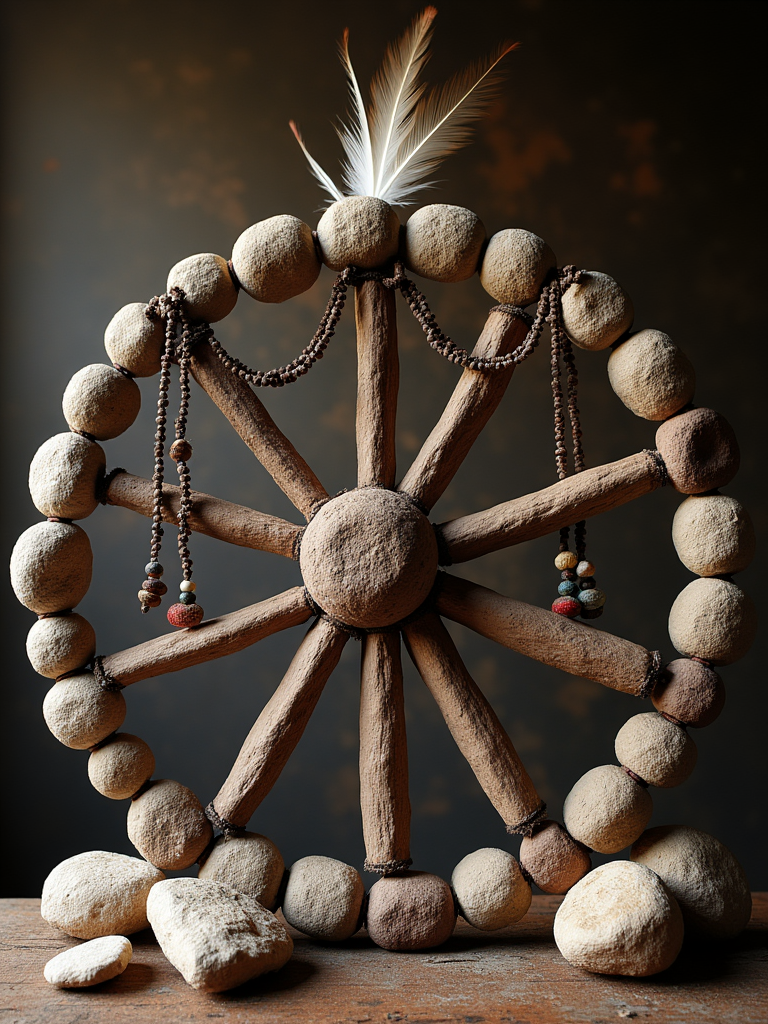
Lunar and Solar Alignments in World Religions
The Moon’s Role in Spiritual Practices
For centuries, the moon has guided spiritual traditions across cultures. Its phases reflect a natural cycle of renewal, release, and reflection. Its quiet pull on the tides mirrors its subtle influence over human emotions and energy.
In Islam, the lunar calendar determines the timing of sacred events like Ramadan, where fasting begins and ends with the sighting of a new moon. This connection to the lunar cycle teaches spiritual discipline and alignment with the natural world. What happens when you let the moon’s rhythm dictate your own acts of mindfulness?
Hindu traditions also honor the moon through festivals like Karva Chauth and Purnima, where specific rituals align with the full moon’s energy. Similarly, Buddhists observe Uposatha days on new and full moons, using these moments for meditation, offerings, and self-reflection.
The moon’s phases can act as a mirror. Consider its waxing phase, growing from darkness to fullness—a time for building and growing. Its waning phase offers a chance for release. These cycles are reminders that change is constant and that both expansion and rest are sacred. How might paying attention to the moon give you guidance in your own phases of growth and letting go?
The Sun as a Source of Spiritual Life
The sun—our source of life and light—has long been honored as a representation of divine energy. Its daily journey is reflected in countless spiritual practices, encouraging you to begin, sustain, and release with the natural rhythm of daylight.
In Christianity, the sun has been used metaphorically to represent the “light of Christ.” Sunrises offer symbols of resurrection and hope. Think of Easter Sunday, celebrated at dawn to mark new beginnings and the triumph of light over darkness.
In ancient Egyptian religion, the sun god Ra was seen as the creator of life, traveling across the sky by day and through the underworld by night, renewing the earth each morning. This cycle aligns with spiritual transformation—death, renewal, and rebirth. Doesn’t this bring hope, knowing that even the darkest parts of your life can lead to light again?
Indigenous peoples of the Americas often connect sunrise with clarity and prayer. Early morning rituals honor the sun’s energy as a source of guidance and life force. How might beginning your day with the same reverence reshape your own mornings?
Lunar-Solar Calendar Connections
In Judaism and some Eastern traditions, both the sun and moon play crucial roles in aligning sacred practices. The Jewish calendar is lunisolar, balancing lunar cycles with solar years to ensure festivals like Passover align with the spring season of renewal.
This blending of the moon’s cycles with the sun’s stability demonstrates the wisdom of balance. The moon reminds you of fluidity and reflection; the sun reminds you of consistency and growth. Could your own life benefit from such harmony?
By studying these alignments within world religions, you’re reminded of a universal truth: the natural world offers rhythms and cycles to guide you. This wisdom of connection—across beliefs, times, and cultures—is a powerful lesson in shared humanity.
Read: Using Sacred Objects in Prayer Manifestation
Lessons We Can Learn from Ancient Wisdom
Trust in Natural Rhythms
Ancient wisdom across cultures often teaches this simple truth: life unfolds in cycles. Just as day turns to night and seasons change without effort, your own life has rhythms that deserve trust. What if you didn’t rush yourself?
Whether it’s Indigenous lessons about reciprocity, lunar cycles in spirituality, or seasonal rituals, this wisdom can remind you to honor where you are. If you’re in a season of struggle, know that ease will come. If you’re in a time of growth, celebrate it. Trust that each phase has its purpose, even when it’s hard to see.
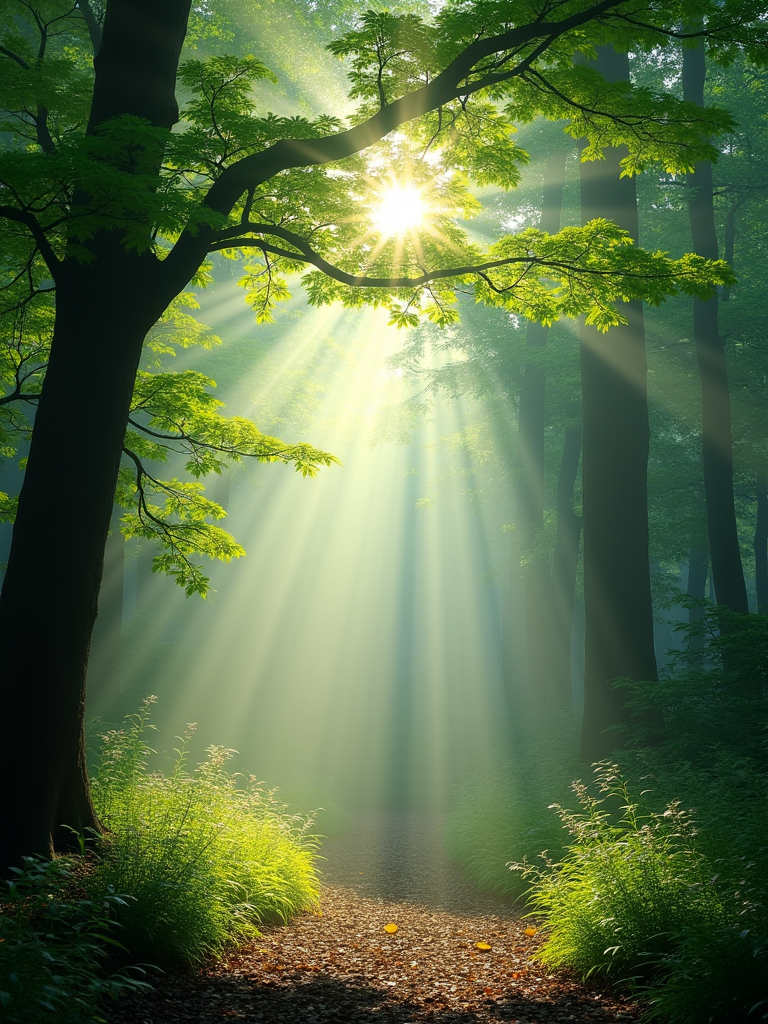
Find Sacredness in the Everyday
Ancient teachings invite you to see the sacred in the smallest details. A drop of water. The warmth of the sun. The quiet pull of the moon. Rather than searching for meaning in far-off places, these teachings ask you to notice the divine presence always surrounding you. How might your perspective shift if you approached even your daily routines with reverence?
Honor Your Connection to the Whole
None of these traditions suggest that you’re separate from the world. Instead, they show how you belong. You’re as much a part of the earth’s cycles as the trees or rivers. By tuning in, you might find that it not only connects you to the natural world but to yourself and others, too.
Reflecting on these lessons could help you move through life with more peace, purpose, and trust. Where can you invite a little more stillness or ritual into your day? How might it feel to align with the rhythms that have guided human lives for thousands of years? Maybe the answers are already written within you, waiting for the right moment to bloom. What wisdom of the past speaks to your heart most loudly right now?
Tools and Rituals to Enhance Prayer Alignment
Sacred Tools: Crystals, Candles, and Herbs
Sacred tools can add meaning, focus, and energy to your prayer practice. They aren’t just objects—they serve as physical reminders of your intentions and connections to the divine. When you thoughtfully choose and use these tools, you create an atmosphere that nurtures deeper alignment in your prayers.
Crystals: Anchoring Energy and Intention
Crystals carry unique vibrations that can help focus your energy. For example, clear quartz is often used to deepen clarity and amplify intentions. Rose quartz encourages love and compassion, while amethyst promotes calm and spiritual awareness. Which of these calls out to you right now?
To incorporate crystals, hold one in your hand during prayer or place it nearby. Let its presence ground and focus your thoughts. You can also set the crystal on an altar or sacred space as a symbol of your prayer’s energy. The key is to choose stones that resonate with your purpose—trust your intuition when selecting them.
Candles: Illuminating Sacred Spaces
Lighting a candle during prayer can represent both the light of your intention and the divine presence you’re connecting with. The flame reminds you of hope, focus, and the spreading of your energy outward. Many people also use specific candle colors to reinforce their prayers: green for growth, blue for peace, yellow for clarity, and so on.
As you light the candle, you might say a small prayer or affirmation. What would you like this flame to represent? Watching the candle burn can create a meditative space, helping you stay centered during your practice. Envision the light carrying your intentions into the universe.
Herbs: Nature’s Wisdom and Support
The age-old use of herbs in spiritual practices connects your prayers to the wisdom of the natural world. Burning sage or palo santo can cleanse your space of negativity, while herbs like lavender and rosemary promote peace and focus.
You can also use herbs in other ways—brewing them as a tea, adding them to a ritual bath, or placing dried leaves on an altar. Let their natural properties guide the energy of your prayers. For instance, if you’re seeking clarity, try inhaling rosemary’s grounding, purifying scent. Lean into what feels right for your unique needs and desires.
Sacred tools connect your practice to something tangible while amplifying your spiritual focus. With these additions, prayer can feel like a fully embodied experience. Which tools feel most meaningful for you today?
Journaling: Tracking Cycles and Manifestations
Journaling is an incredible way to reflect, record your journey, and gain clarity. When you take time to write about your experiences with prayer, you’re essentially creating a map of your spiritual growth. Over time, you’ll begin to notice patterns and connections you might’ve missed otherwise.
Read: Group Prayer Circles: Amplifying Collective Manifestation Power
Tracking Natural and Spiritual Cycles
Keeping a journal allows you to record how your energy aligns with larger cycles—be they lunar phases, seasonal shifts, or even your personal rhythms. For example, you might notice you feel particularly inspired during the new moon or calm as autumn sets in. These insights can help you plan your prayers and intentions with greater awareness.
You might ask yourself:
- What phase am I in today?
- How is nature reflecting my inner life?
- How did my prayer practice feel during this time?
Simply jotting down a few notes each day can reveal so much about how your journey ebbs and flows.

Manifestation and Reflection
Have you ever prayed for something and then forgotten all about it, even when it came to fruition? Journaling helps you stay aware of the results of your intentions so you can celebrate them fully. Whenever an answer to prayer or manifestation occurs, capture it in your journal. Write about the steps that led there, especially if they weren’t what you expected.
This doesn’t need to be complicated—just a few sentences to express gratitude and acknowledge the movement in your life. Reflecting on what’s working (and what isn’t) allows you to align future intentions more clearly.
Journaling keeps your spiritual practice intentional and organized. As you look back on your entries, you’ll see how far you’ve come—and you might even catch glimpses of divine patterns weaving through your life.
Visualization and Meditation Techniques
Visualization and meditation are practices that deepen your connection to your intentions, helping you align your energy with the outcomes you seek. Whether you’re visualizing what you hope for or meditating on the present moment, these techniques cultivate focus, clarity, and peace.
Visualization: Seeing Your Intentions Take Shape
Visualization invites you to imagine your prayers already realized. It’s not just about seeing an image in your mind—it’s about feeling the joy, relief, or peace that outcome would bring. For instance, if you’re praying for deeper relationships, picture yourself surrounded by love and warmth. Notice the details: Who’s with you? What are you doing? How does it feel?
Even a few minutes of this practice can shift your mindset. When you believe in the reality of your intentions, you align yourself energetically with their fulfillment.
Try incorporating sensory elements into your visualizations. Imagine smells, sounds, or touch. This makes the experience more vivid and anchors what you’re working toward.
Meditation: Creating Space for Connection
Meditation isn’t about stopping your thoughts—it’s about making space for connection and stillness. Sitting quietly with your prayers gives your mind and spirit a chance to settle, making it easier to receive guidance or clarity.
Find a comfortable space free of distractions. If you like, you can hold a sacred tool, such as a crystal, or light a candle to enhance the atmosphere. Close your eyes and focus on your breath—slowly breathing in and out.
If your mind starts to wander, that’s okay. Gently bring your attention back to your breath or mantra. Some people like to silently repeat affirmations, like “I am supported” or “My path is unfolding.”
Meditation can also include visualizations. For instance, you might picture light filling your body, symbolizing divine energy or peace. Let this light spread outward, extending to your intentions or the areas of your life you’re praying for.
Combining Both Practices
You don’t have to choose between visualization and meditation—they can work beautifully together. Start with a few minutes of visualization to focus on your intention, then shift to meditation to release attachment to the outcome. Together, these practices balance your effort with trust, creating a flow that aligns action with faith.
When you take the time to visualize or meditate, you’re not just “doing” prayer—you’re living it, embodying it fully. How might these practices deepen your connection to what matters most?
Challenges in Aligning Prayer with Natural Cycles
Modern Life and Disconnect From Nature
Have you ever felt that life moves so fast you barely have time to notice the sky, let alone connect deeply with nature? It’s not your fault—our modern world often pulls us in countless directions, leaving little room for stillness or connection with the earth. Technology, constant noise, and packed schedules can make it easy to feel disconnected. But underneath it all, there’s likely a part of you craving something slower, steadier, and more rooted. Can you feel it?
This disconnect from nature can leave prayer feeling distant or surface-level, as if you’re going through the motions rather than truly connecting. After all, how can you align with natural cycles if you hardly notice them? Without pauses to sync with the rhythms of the seasons, moon, or sun, it’s easy to lose sight of that sacred flow—a flow that’s always present, waiting to guide you.

Reconnecting doesn’t mean upending your life. Start with small steps. Maybe you take a moment to notice the way light filters through the trees on your commute. Or, at night, gaze at the moon and reflect on its quiet, powerful cycle of renewal. What would it look like for you to weave little strands of nature back into your day?
You don’t have to live in the countryside to feel this connection. Even in a city, nature finds its way—plants breaking through cracks in the sidewalk, birds adapting to the hum of human life, or the cycle of seasons reminding us all of time’s infinite flow. Let these small moments of the natural world remind you of your place within it.
Learning Patience in a Fast-Paced Society
Modern life isn’t just busy; it’s filled with urgency. Deadlines, instant messages, and the expectation to always be “on” can make it feel like you have no choice but to keep up. Yet, this pace often clashes with the natural rhythms of growth and manifestation. Have you ever felt like you’re rushing ahead of yourself, desperate for results that don’t seem to come?
Nature offers a quieter lesson. A tree doesn’t grow overnight. Rivers don’t rush to carve their paths—they simply flow with time. In the same way, your prayers and intentions aren’t always meant to bear immediate results. They need nurturing, patience, and trust in their unfolding—things that can feel hard to embrace when society values “fast” over “steady.”
It’s important to honor where you are in your process, even if it feels slower than you’d like. Can you give yourself permission to move at your own pace? Aligning with the natural world requires patience and a willingness to let go of the instant gratification mindset. This doesn’t mean doing nothing. It means acting intentionally, then trusting the process, much like planting seeds and tending to them with care.
In moments when patience feels impossible, remember that resting or slowing down isn’t wasted time. Think of the seasons: winter may seem like a pause, but beneath the frozen ground, the earth is preparing for new life. Could your moments of waiting hold the same quiet preparation for what’s to come?
Ask yourself: What would happen if I stopped pushing and started trusting? Even a small shift—like breathing deeply before reacting or letting yourself take a single step back—can help you feel more in flow with the rhythms around you.
How to Reconnect Through Mindfulness and Observation
Mindfulness is one of the easiest ways to bridge the gap between modern life and nature’s cycles. It starts with noticing—really noticing—what’s happening around you. Have you paused today to feel the sun on your skin or watch clouds drift? Small observations like this can remind you of the steady rhythm of the earth, even in the chaos of daily life.
Start by stepping outside, even for just a few minutes. Take a moment to breathe deeply. Feel the air. Listen to the sounds. How does the world feel different when you stop and pay attention? If going outside isn’t an option, try tuning into the natural elements in your space—a houseplant, the warmth of sunlight streaming through a window, or even the scent of fresh air after a rain.
Mindfulness invites you to slow down and be present. It helps you tune into what’s real and alive in the moment. Instead of rushing through your day, rushing through your prayers, it can shift your perspective, helping you feel more connected to something greater.
Observation deepens this practice. Notice the subtle changes around you—buds on a tree signaling spring, cool breezes hinting at autumn, or the moon steadily shifting through its phases. These changes mirror the cycles in your own life. These quiet lessons from nature can teach you that progress doesn’t always look big or dramatic. Growth often happens in small, steady steps.
Could you create moments of mindfulness in your daily routine? Try pausing before eating to express gratitude, noticing the textures and flavors. Or mindfully walk to the rhythm of your breath, feeling the ground support you. The more you weave these moments into your life, the more you’ll recognize how deeply connected you already are to the natural cycles.
Every day offers a chance to come back to yourself and to nature. Even amidst the distractions and demands, you can find moments of stillness to observe, reflect, and realign. It’s not about perfection; it’s about presence. How might your prayers shift if they came from this place of deep connection and mindfulness?
Read: Prayer Journaling
Practical Steps to Begin Aligning with Natural Cycles
Building Awareness of Personal and External Rhythms
Awareness is the first step toward realignment. Start by simply noticing. What rhythms already exist in your life? Do you feel more energetic at certain times of the day or year? Are there natural peaks and valleys in your emotions or focus? Paying attention to these patterns gives you insight into your internal cycles.
Alongside this, observe the external world. Notice the shift from day to night, the changing light, or how the seasons touch the environment around you. You could even look to the moon’s phases—how does its waxing and waning affect your mood, energy, or thoughts? These observations don’t require dramatic changes—just little moments of mindfulness to tune in.

Journaling can be a great tool here. Track how you feel over a week or month and compare it to things like moon phases, weather, or time of year. Does your creativity flow better at the start of a season? Does the new moon leave you introspective, while the full moon feels energizing? What patterns start to emerge?
This isn’t about judgment or forcing change—it’s about understanding. Awareness creates a calm foundation for syncing your intentions, actions, and prayers with the world’s natural rhythm. How can noticing these patterns help you work with the flow of life instead of feeling like you’re working against it?
Creating a Calendar for Intentional Practice
Once you’re aware of both your personal rhythms and nature’s cycles, creating an intentional calendar becomes your next step. This calendar provides a simple way to ground your goals, prayers, and reflections within larger rhythms.
For example, you might use the lunar phases as touchpoints. During the new moon, set fresh intentions or write down what you hope to manifest. The full moon can invite gratitude, cleansing, or releasing limiting beliefs. Do this consistently, and over time, you’ll feel the power of aligning your intentions with the moon’s natural energy.
The same idea works for seasonal changes. Use spring for fresh starts, summer for abundance, autumn for reflection, and winter for rest and preparation. These anchors can help you feel supported by the cycles of the earth, turning each phase into a sacred opportunity to focus your energy.
If creating a detailed calendar feels overwhelming, start small. Choose one rhythm—maybe the moon phases or the changing seasons—and layer in intentional moments. This could be as simple as marking dates to meditate, journal, or pray with a specific focus. What rhythms feel most meaningful to you? How can they shape your practice?
Your calendar doesn’t have to be rigid. Life is dynamic. Think of it as a guide—something to gently bring you back to alignment whenever you feel off track.
Adapting Your Prayer Routine to the Natural World
When you adapt your prayer routine to natural rhythms, it becomes both personal and expansive—rooted in your spirit and connected to something larger.
Start with timing. Morning prayers might focus on beginnings and clarity, while evening prayers can invite gratitude and release. You can also let the phases of the moon or the seasons shift the focus of your practice. Perhaps during a waning moon, you reflect on what needs releasing, while a waxing moon encourages prayers for growth and momentum.
Your physical surroundings can enrich your connection. Whenever possible, take your prayer practice outdoors. Sit beneath a tree, feel the earth beneath you, or let the sunlight warm your face. Let nature remind you of its steadiness and cycles, anchoring you in the moment. If you can’t step outside, bring nature in—light a candle, surround yourself with plants, or place a small bowl of water nearby during prayer.
Consider incorporating symbolism:
- Earth energy for grounding and stability (hold a stone or sit on the ground).
- Water energy for release and healing (place a bowl of water or pray near a stream).
- Solar energy to align with light, strength, and clarity during your practice.
Finally, let your prayers reflect what is happening in the world around you. During spring, pray for renewal and growth. In autumn, focus on letting go and honoring what has been harvested in your life. Aligning your words and energy to these rhythms naturally invites ease, flow, and deeper meaning into your practice.
What if your prayers were a reflection of the world’s harmony? As you adapt your routines to these cycles, notice how this connection impacts not just your spirit but your entire sense of being. Let the natural world guide your path forward, one sacred rhythm at a time.

The Personal and Collective Benefits of Alignment
Enhancing Personal Growth and Inner Peace
When you align yourself with natural rhythms, you invite a profound opportunity for self-discovery and healing. Imagine how life might feel if you flowed with its natural cycles instead of working against them. Each day, season, or phase becomes less about rushing and more about embracing where you are.
Alignment nurtures personal growth. Have you ever noticed how plants grow stronger when they’re rooted in rich soil, given just the right sunlight and water? It’s the same for you. When you tune in to what fuels your body, mind, and spirit, you create fertile ground for transformation. You start to grow—not by force, but through intention and love.
Inner peace follows when you stop feeling disconnected or overwhelmed. Think about the tranquility you feel in nature—listening to waves, walking through a quiet forest, or seeing the stars stretch across a night sky. This peace becomes your foundation when you learn to sync with life’s steady pulse. By quieting external noise and honoring your unique rhythm, you’ll notice stress softens, clarity sharpens, and your spirit feels lighter.
What if you gave yourself permission to slow down? Instead of resisting rest or rushing productivity, take cues from the cycles around you: rest when it’s time to rest, act when energy peaks. Reflect during quieter moments and celebrate when blessings arrive. Each phase deserves your attention.
One of alignment’s most profound gifts is self-compassion. Are you treating yourself with the same kindness you extend to others? By noticing your own needs and honoring them, you foster inner peace that isn’t situational—it’s sustainable. This practice ripples through every part of your life, from your relationships to how you handle challenges.
The more aligned you become, the more you realize that growth and peace don’t come from forcing change—they come from working with life’s natural flow.
Read: Creating a 40-Day Prayer Manifestation Practice
Creating Harmony Between Humanity and the Earth
Your connection to the earth runs deeper than just living on it. You are part of its cycles—its energy mirrors your own. What would it feel like to truly harmonize with this planet that sustains you?
When humanity aligns with nature, healing begins. Eating seasonal foods, reducing waste, planting trees, or even pausing to express gratitude for sunlight and rain are simple yet profound ways to honor your relationship with the earth. Small, mindful acts remind you that nature isn’t something separate or distant—it’s an extension of you.
Think of the balance found in ecosystems. Every element plays its part, no matter how small. This balance teaches us an important truth: one individual action may seem minor, but collectively, small acts of care ripple out into profound change. By aligning your choices—consuming consciously, letting the land rest, or protecting resources for future generations—you contribute to a harmony that benefits both humanity and the planet.
Alignment also fosters a sense of belonging. Have you ever gazed at the stars and felt in awe of the vastness? That awe transforms into a deep sense of connection when you understand your place within the web of life. Trees breathe out the air we take in. Rivers give water, which nourishes our bodies. The earth supports you daily—finding harmony means supporting it in return.
Working together with nature can also shift humanity’s collective mindset from one of dominance to reciprocity. Instead of extracting or taking, alignment invites a mutual exchange. It’s less about “what can I get?” and more about “how can I give back?” Could you begin seeing the gifts of the earth as sacred rather than automatic? A conscious shift like this can transform the way we treat our world.
Imagine what harmony with the earth could bring—not just cleaner air or thriving forests, but an inner recognition that life works best when it’s in balance. As humanity aligns with these rhythms, our collective well-being rises.

Spreading Positivity Through Energetic Symbiosis
Energy flows constantly between you and others. You affect the world around you—not just through your actions but through the energy you carry. What kind of energy are you sharing right now?
When you align with life’s natural flow, your energy steadies rather than scatters. You create a ripple effect, positively influencing others without even realizing it. Think of how uplifting it feels to be around someone grounded and peaceful. That’s the gift you offer others just by living in alignment. Your calm inspires calm. Your joy spreads joy.
Energetic alignment encourages symbiosis. Just as the sun fuels life while receiving nothing in return, your positive energy contributes to a collective pool that feeds relationships, community, and even global consciousness. Nature reflects this symbiosis beautifully: bees pollinate flowers, which then nourish entire ecosystems. Could your energy be a similar force of good, weaving connections wherever it flows?
By aligning with positivity, you encourage others to do the same. It doesn’t mean ignoring challenges or negativity—it means choosing love, compassion, and gratitude as often as possible. Think of it like tending a fire; feeding it with kindness keeps it burning brightly, offering warmth to those around you.
How would the world shift if more people carried this practice into their daily lives? Imagine communities driven not by competition or fear but by shared energy focused on growth, harmony, and kindness. Could you be the starting point of that shift?
Energetic symbiosis also feeds back into your personal well-being. The more love you spread, the more grounded you feel within yourself. It’s a reminder that life thrives when connection, rather than isolation, guides your spirit. Shared positivity doesn’t diminish your energy—it amplifies it, creating an infinite flow of support and light.
Spreading positivity through alignment doesn’t require grand gestures. A kind word, a mindful prayer, or even a smile can ignite change. Every ripple you create feeds this symbiosis, proving that alignment isn’t just personal—it’s communal. Through it, you help build a world driven by harmony rather than chaos.
Conclusion
Embracing Nature as a Partner in Spiritual Practice
Nature offers itself as more than a backdrop to your life—it’s a partner, a guide, and a teacher in your spiritual journey. Its cycles, its rhythms, and its presence remind you that you’re never alone. When you step into nature, you step into a sacred space where the earth speaks in whispers, inviting you to listen. The rising sun, the flowing rivers, the changing seasons—all of these elements are reminders that growth, rest, and renewal are intrinsic to life.
Have you noticed how your heart feels lighter after watching a sunset or how your mind clears when you hear the rustling of leaves? These aren’t coincidences. By intentionally embracing the wisdom of nature in your spiritual practice, you’re creating a harmonious relationship with the world around you. Whether it’s through mindful observation, connecting to the elements, or syncing your prayers with natural cycles, you honor this partnership.
Nature shows you that even amid the messy, chaotic parts of life, there’s beauty, meaning, and purpose. It asks you to notice, to feel, and to celebrate the sacredness woven into every moment.

The Journey of Continuous Growth and Spiritual Connection
Your spiritual journey is not linear. Like the changing moon, the ebbing tides, or the seasons shifting in and out of vibrance, your connection to the divine deepens in cycles. Some days, you may feel illuminated with purpose and clarity. Other days, stillness or questions might linger. Both are necessary. Both are sacred.
When you align with nature’s wisdom, you grant yourself the patience to move through life’s rhythms without forcing your path. You learn to trust the process—whether in times of growth or times of rest. Each phase, even the challenging ones, becomes an integral part of your story. What can you take from today’s journey to inspire your steps forward?
Spiritual connection isn’t something you need to find—it’s already within you, waiting to bloom when nurtured. By embracing practices that align with the natural world, you deepen that connection not just with yourself but with something infinitely greater.
Reflecting on the Power of Aligning with Nature
When you pause to align your energy with the rhythms of the natural world, you honor the sacred balance that exists in all things. You remember that life is not a race but a beautiful flow of beginnings, growth, release, and renewal. Doesn’t it feel freeing to let go of the need to control and simply let life’s natural rhythm guide you?
Nature teaches you to trust—to trust in the cycles of day and night, of abundance and rest, of endings that lead to new beginnings. It shows you that even the smallest elements, like a single drop of rain or a budding flower, are part of a cosmic pattern of connection and purpose.
As you move forward, consider how you might carry these lessons with you. Can you notice the divine presence in the ordinary? Can you slow down and honor the wisdom of cycles in your prayers and your life? And most of all, can you trust that you are already in harmony with something vast and sacred?
Aligning with nature doesn’t just enhance your spiritual practice—it transforms it. It reminds you that you are part of the earth’s rhythm, the universe’s energy, and the divine’s infinite grace. Let this understanding guide you, nourish you, and inspire you, one sacred step at a time. What will you choose to honor today—with nature as your partner and the divine as your guide?

